Amati-Kraslice - the ones we love to hate?
-
This is my attempt at piecing together a chronology of Europe's infamous band instrument manufacturer. I'll have to go back through later, but this is a start. I hate to admit that I own more of these than I should, partly due to my fascination with their designs inspired by Conn, ranging from simple aesthetics like the "grip rings" on the valve casings, to the design of pistons similar to the barrel-spring type in Victors and Connstellations.
While they still exist [since 2012 as a division of Geneva Group UK], they don't have much in the way of records when I inquire about past models, and they've mentioned their serial "list" is vague before the 1980s, when they implemented computer record keeping. There isn't much in the way of English-language material, but Brasspedia details the founding of Amati-Kraslice pretty well. Unfortunately the photos I saved sometimes went missing, and the early horns are a hodgepodge of parts and suppliers. It doesn't help that there are a few sequences in use that often overlap...
October 17, 1945 - Amati cooperative of musical instrument manufacturing is established, with representatives meeting in the cafeteria of the F. X. Hüller company. The co-op also consists of "a total of 322 [firms] producing musical instruments...Josef Glassl, Bohland & Fuchs, Julius Keilwerth, A. K. Hüttl, Franz Michl and Kohlerts Söhne" - some of these trademarks will be used alongside the Amati name for several years
1948 - Communists take full control of Czechoslovakia, nationalizing industries and continuing consolidation, which was complete by 1952
This interesting bit was in a HUC thread until it disappeared, wit this summary on the Amati page. Keilwerth family members were retained to assist with operation - "Max was retained by Amati to consult on the integration of the cooperative. He remained at Amati until 1951. He would have had connections to all of the former German suppliers and to new firms run by his former workers, and could easily have subcontracted work there - particularly in East Germany", explaining the occasional Amati trumpet with Made in Germany on the top of the receiver, in the manner of really early Böhm-Meinl trumpets, as well as a distinctive type of valve block used early on.
In other cases, the Amati name appears on a wide range of prewar designs, likely just finished instruments made with leftover parts. Pigtail crook peashooter trumpets, rimless "Vocabell" peashooters, octagonal bell trumpets, all sorts of others...Amati kept using its constituent firms' trademarks, and in the case of Keilwerth, continued making saxophones in the same sequence with no changes. Keilwerth argued that their family owned these trademarks, but Amati countered in stating they were the "legal" corporate successors, who inherited the rights to the name. In 1955, the European Court in The Hague ruled in favor of Keilwerth. Hüttl was also awarded compensation for what Amati had seized in 1945-6. I don't know how Karl Fuchs of B&F fared, since the B&F name appears on Amati horns into the 1980s, and Fuchs died in Germany in the 1960s...
Meanwhile, Czechoslovakia was re-industrializing under a Five-Year Plan, on the Soviet model. That said, the state managers knew that musical instrument export was a great way to get much-needed hard currency [Dennis Gazarek, Elmar here, and a number of others echoed that], and they could build upon the network of small craftsmen building from parts milled out in the central shop as "showpiece" horns, called "Meister Trompete" in a 1970s-80s catalog. This was a continuation of the earlier model, just under state control. I thin they began churning out their infamous designs by the end of that plan.
While musical instrument manufacturing was prioritized, Amati quality still suffered under the command economy. I recall Elmar mentioned the "brass" used contained more impurities than Western brass, since it had been recycled from Soviet artillery shell casings containing high amounts of lead, primed with mercury [!!!]. The Soviets didn't see a problem with that [look at the tolerances on their weapons in general], and Amati instruments probably have half their issues due to the materials used.
The serial numbers appear in two major sequences: I call the first the "mass-produced" series, and the second "Meister series". The first is recognizable by the large numbers stamped on the left-hand side of the 2nd valve casing, perpendicular to the cap. The Meister series usually has 2-piece valve casings [sometimes with nickel upper sections], a model name indicating an attempt at a pro design, and a small number stamped parallel to the bottom cap of the 2nd valve casing, left-hand side, near the cap.
In some cases, a horn has the mass-produced valve block and serial, but with a second number stamped around the receiver, fitting in the Meister series - my "semi-pro" Arioso Super is one of a few like this. I wonder if they sent these parts out for assembly by trusted, experienced craftsmen [rather than workers slamming parts together en masse - I have a Legrand cornet with bent valve guides, no slide ferrules, and slide legs/tubes not even parallel].
ca 1953 - Amati is retooled for mass production, introducing new designs which they will make for 40 years
The infamous trumpet with "Conn Director valve grip rings" appears here, and the existence of models with Toneking on the bell means that they were made prior to Keilwerth winning the lawsuit in 1955The earliest "mass produced" model I found was a Grafton trumpet, made for Dallas of London, serial 519. It was purchased used in 1963, and it had apparently been around for "some time" before.
My list mixes the ones with letter prefixes [which appear to have East German parts and are rare] so I'll have to go back and prune that.These continue until the 800000 series. I presume they hit 999999 and started over [000019 is the earliest I can find of that sort], still in that sequence today.
They occasionally tried to make horns that weren't complete junk - the Arioso Supers are particularly gussied-up, with Olds-style 1st and 3rd triggers, nickel slides, reverse tuning slide, a sort of "Italian rim" where the edge of the bell goes over and past the wire a bit [not quite a garland, though the crappy Legrand has one, and several B&F ones have flat rims].
The Meister trumpets appear under names like Consul [which has a 1st valve slide on the left like Nova/Hayes], Festival, Senator, Excelent [sic! they really spelled it that way], etc. These aren't at the level of classic Conn, Bach, Yamaha, etc. but are usually more...stable than their low-end counterparts. These were assigned model numbers in the 1980s, and probably stopped when they ran out of parts in the 1990s or so. I can't find much on them, and it doesn't help that horns marked Czech Republic have serials just below others marked Czechoslovakia of the same model...!
In 2012, Geneva Group UK purchased Amati - they had already sourced components, and it apparently was best to just buy the factory. The newest pro horns apparently are nice [the first they've made to a high level in 80 years...?!] and even have bi-metal bells, something only seen on rare models like the Amati-Kraslice ACR-700 cornet.
-
@conndirectorfan Well, it looks like I'm outside the window for editing...so I guess I have to post again.
These are the piston designs mentioned in the 1970s/80s catalog, visible at https://drive.google.com/file/d/0B5-_7UCbLfDqVzNQT3U2NlpYaGM/view [the rotary one is https://drive.google.com/file/d/0B5-_7UCbLfDqekN6NlZqU0NiZUk/view]Type A [or G1] has a rectangular stem, exposed spring, and a round, plastic guide - they appear to be based on B&H Microbor valves
Type B [G2] are bottom-sprung
Type C [G3] are used in Meister trumpets, with a spring barrel that has a long stem attached to barrel bottom - the valve guide is at the bottom of the barrel, and the top has a thin flangeThe catalog doesn't mention the Bach/Blessing type pistons that Amati used prior to then, which they reintroduced in the 1990s and still use to this day. The catalog also doesn't mention the Conn type pistons, similar to G3 but with the guide at the top of the barrel [like Conn], with the rod attached to the barrel [unlike Conn], large rolled top flange [unlike either type], which appear most frequently in Musica-Steyr stencils [and even look like Schenkelaars pistons!]. The lower section is identical in both these and the G3 Meister valves, and I've used the lower-end pistons to repair Meister horns.
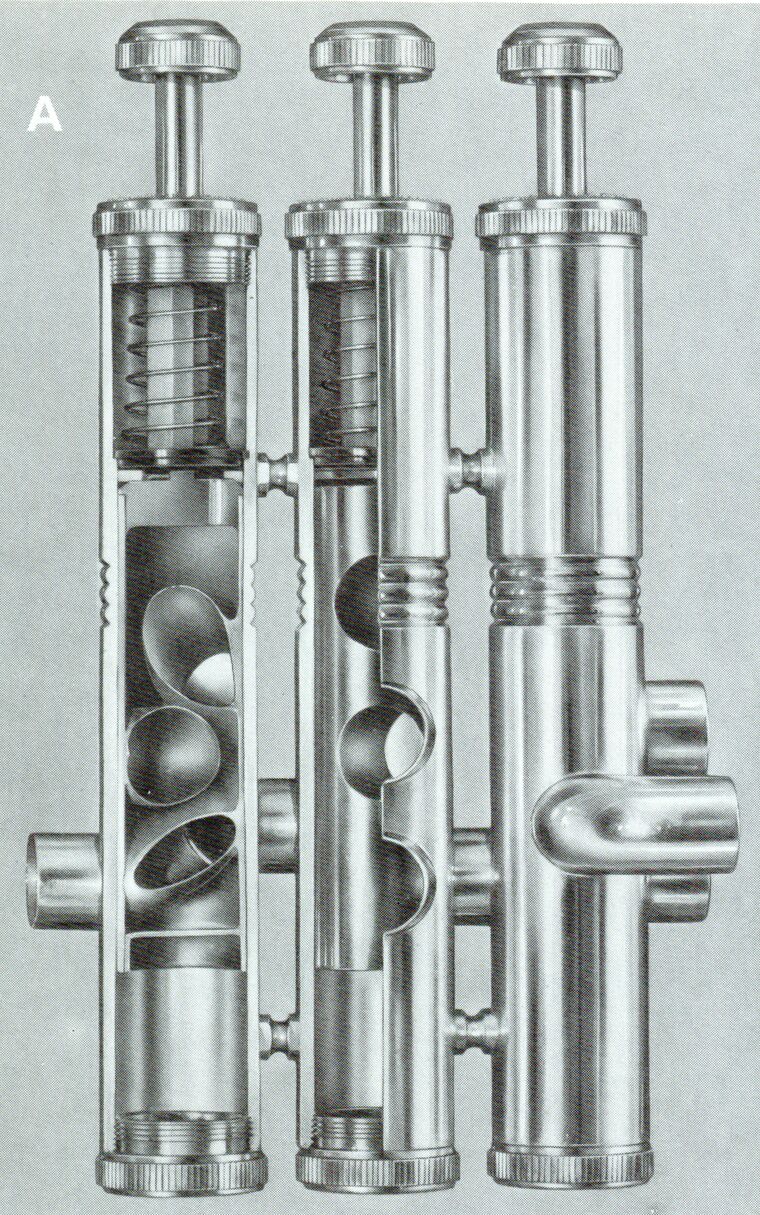
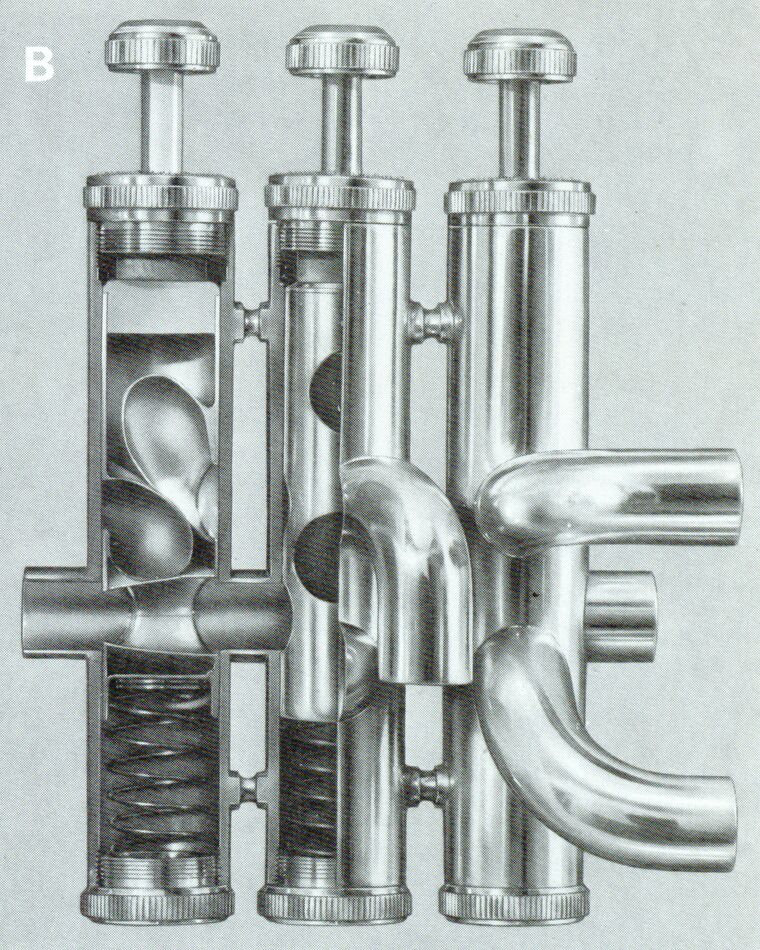
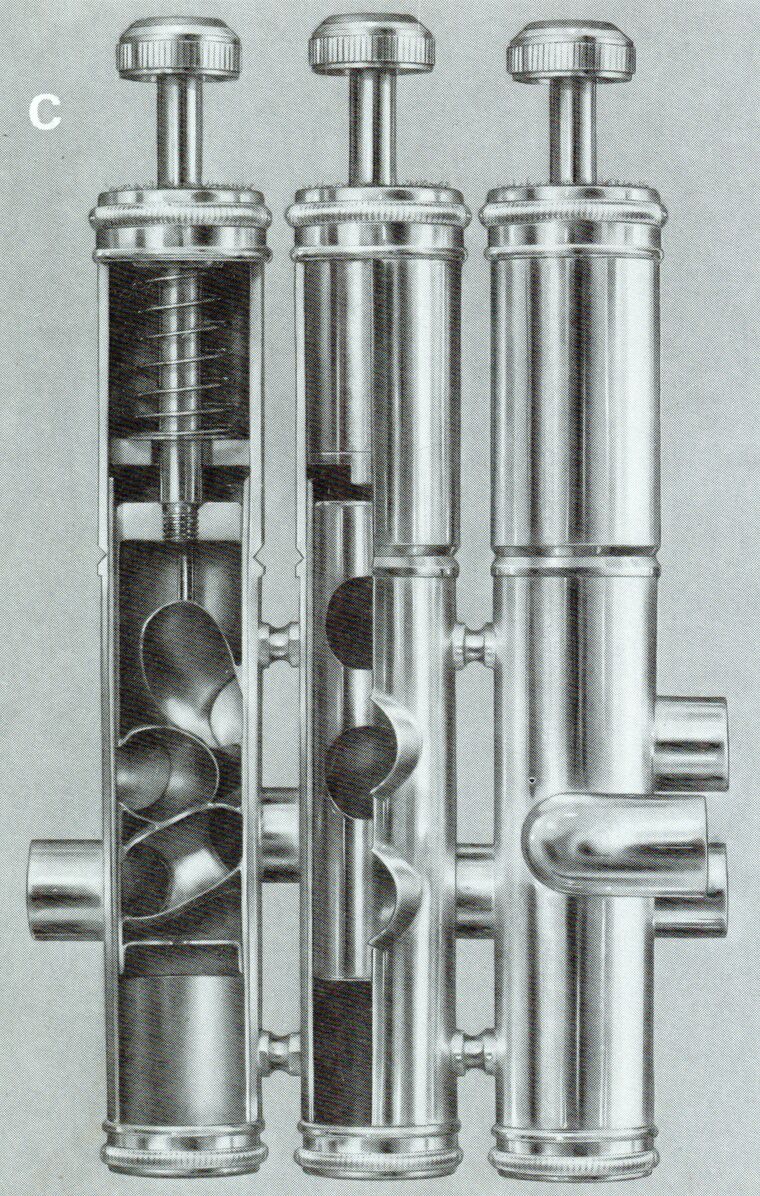
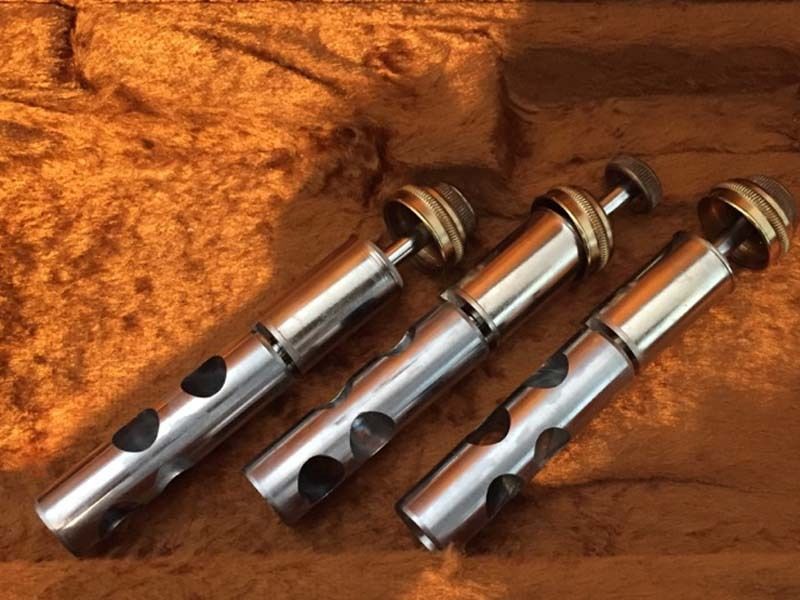
The other "cheaper" barrel piston
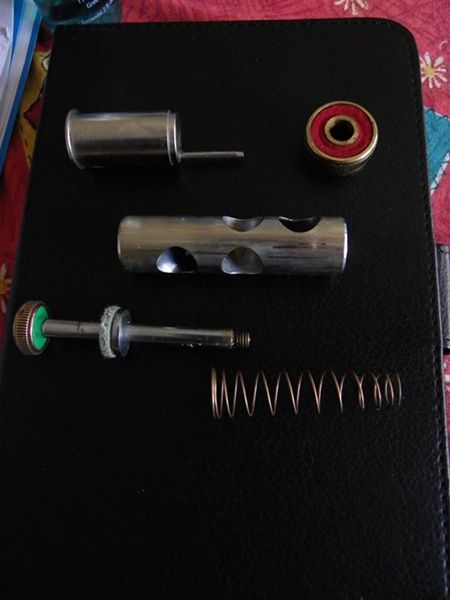
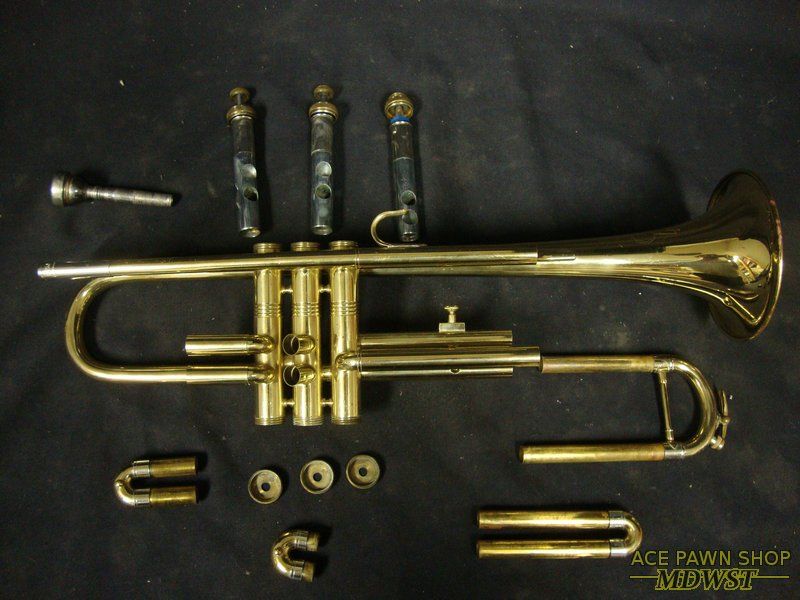
The Bach or Blessing style piston [similar to most modern types]

-
@conndirectorfan The embarassingly-bad serial list...
https://drive.google.com/file/d/0B125S8bNnBMTN1lldHNqMWJJY1U/view?usp=sharing -
I picked up a mystery Czech trumpet today.
It has TEMPO on the bell and a serial number vertically on the 2nd valve case.
It has an interesting flat profile finger ring.
THe valve guides appear to be metal of some sort.Not sure how to date it
I have polished it since it came home-these are the seller's pics -
@gloucestre said in Amati-Kraslice - the ones we love to hate?:
Not sure how to date it
Tell the horn you love it, and promise not to rub it the wrong way... After that, you're own your own.
-
Oh I like it.
The lady I got it from said it was her father's, but she thought it was a King Tempo and dated it to 1910 because of the serial number.
I was pretty sure by the time I got to her house it wasn't, but bought it anyway as I liked the sound.
It seems to have a tight bore and a bit of resistance, the leadpipe starts off narrow.
There is little damage, just a few small dings.
The lacquer is worn but I like that and I gave it a polish with some Mother's Mag Polish and it has come up a bit shinier.
There are some black spots I can get off with a little work.
Oh the valves and slides all work so I am not complaining. -
@gloucestre Hi Gloucestre, I,m guessing your Tempo is the one recently listed on our (Australian), Gumtree site. I did look at this one and asked the vendor for some details. She was able to ind "made in Czecho" I think on the MP receiver. The opportunity arose for me to put my money elsewhere, so I passed on this one. Glad it found a good home. Regards Tom
-
@chelpres I did see photos of this on Gumtree when I was doing some research but didn't see the Gumtree ad-I saw this on Facebook.
She didn't mention Czechoslovakia to me but I did see it on the leadpipe when I was inspecting it.
It isn't the couching tiger I was hoping for but I liked it so it came home
-
Unfortunately the images aren't loading for me, but I presume its similar to https://www.ebay.com/itm/Vintage-Trumpet-Tempo-Czechoslovakia-w-silverplated-mouthpiece-accessories-case/333814897426 ? It sounds like a standard Amati-Kraslice trumpet, but I'm glad to hear you like it! It can't be worse than my Legrand cornet with slides that don't have ferrules...
I don't have a great range of years for Amatis, but 500000s and 600000s seem to be from the 1970s, 700000s and 800000s from 1980s to early 1990s, with a reset sometime in the 1990s [it doesn't help that they used existing stock parts for a while...a valve block serialled in before 1993 doesn't get completed until later, so it has "Made in Czech Republic" on the receiver, but then a nearby horn is completed sooner and says Czechoslovakia...].
If you post the serial here, I might be able to narrow it down a little. They switched their main piston type around the 1970s, so that gives an idea of it as well.
-
Hi, the serial number is: 23756
Mine is a bit different to the one you showed but broadly similar.
The mouthpiece is an older style brass, conical/funnel shape rather than the "bach" shape, it is also quite small internally- this one is great for high notes.
The finger ring is flat vertically rather than horizontally as they usually are too.
Mine has an old looking timber case with red "velvet" lining
I wonder if there is another way to show you the pictures? -
I was contacted for information regarding "Tempo" 23756 back on mid October. The valve caps and some other details look mid-century, but could be earlier. The pinkie hook really stands out. It is of the same unique shape and style used by Anton Riedl of Graslitz. Also it has a garlanded rim on the bell, though a very subtle one (just a strip of brass trapped in the rim bead and tight to the flare about 1/2" wide). Riedl was among those firms decimated by the ethnic cleansing of Bohemia in 1945/6, but I believe did contribute some to Amati. Has anyone seen an Amati with a garland and a Riedl pinkie hook before?
-
@gloucestre Upload them to a Google Drive folder [then send link] or hosting service like Flickr, Photobucket, etc - that might be the best way. That serial is low enough that it might have Riedl/etc features carried over...which leads to...
-
@oldschooleuph such as this? https://www.metmuseum.org/art/collection/search/742529 or http://www.antonius.cz/en/productdisplay/bb-trubka-amati-consul-vk1735 or https://www.odkarla.cz/trubka-consul-amati-kraslice [Fotogalerie]
https://www.antonius.cz/sites/default/files/tr_vk1735.jpg
I remember seeing [what I considered] Art Deco features on many of the pre-100000 horns, and this distinct pinky hook appears on some co-branded horns like B&F: https://www.ebay.com/itm/Amati-Kraslice-B-Trompete-Versilbert/124284915476
For reference, the few Legrand photos I have on hand: https://drive.google.com/drive/folders/1G2KgnW7PlawnfyMzwRacV58KYTmYNwHY?usp=sharing - the U looks like what I've seen stamped on older-looking horns [and visible letters near serials don't appear too often on Amatis]
B&F co-branded horns appear into the 600000s at least
-
@conndirectorfan Sort of.
The first few have the pinkie hook (the Arigra being the most familiar of course), but not the bell garland. The LeGrand cornet has the same style bell garland (except it happens to be nickel on the LeGrand vs brass on the subject horn) but not the hook. The Amati on EBay has an interesting French bead rim and the pinkie hook looks like a middle school shop student's attempt at the Riedl design (wow would those sharp edges be good at preventing anyone applying pressure!), so there might be a very interesting story there (of loss of competence in the workforce and how that impacts build).These do support the possibility that the subject horn is an Amati from the decade following collectivization.
-
@oldschooleuph I think this is the same trumpet, the lady was trying to tell me it was King Tempo from 1910 but I knew it wasn't.
I would be interested to know just how old it is.
It seems similar to the one in the ebay listing above but is brass not silvered.
I have deleted the pics from this post- see below (I hope )
) -
@gloucestre
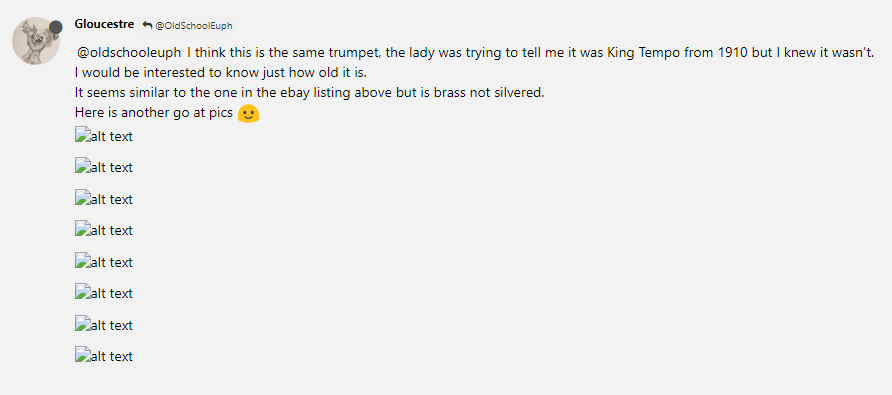
Photos still aren't loading - I'm not sure what you're using [looks like Google Drive or Photos?] but the permissions or links aren't right. I tried several proxies and archiving tools but they all have the same general effect.
-
Ok trying again, different hosting site (I can email them if you are interested too)
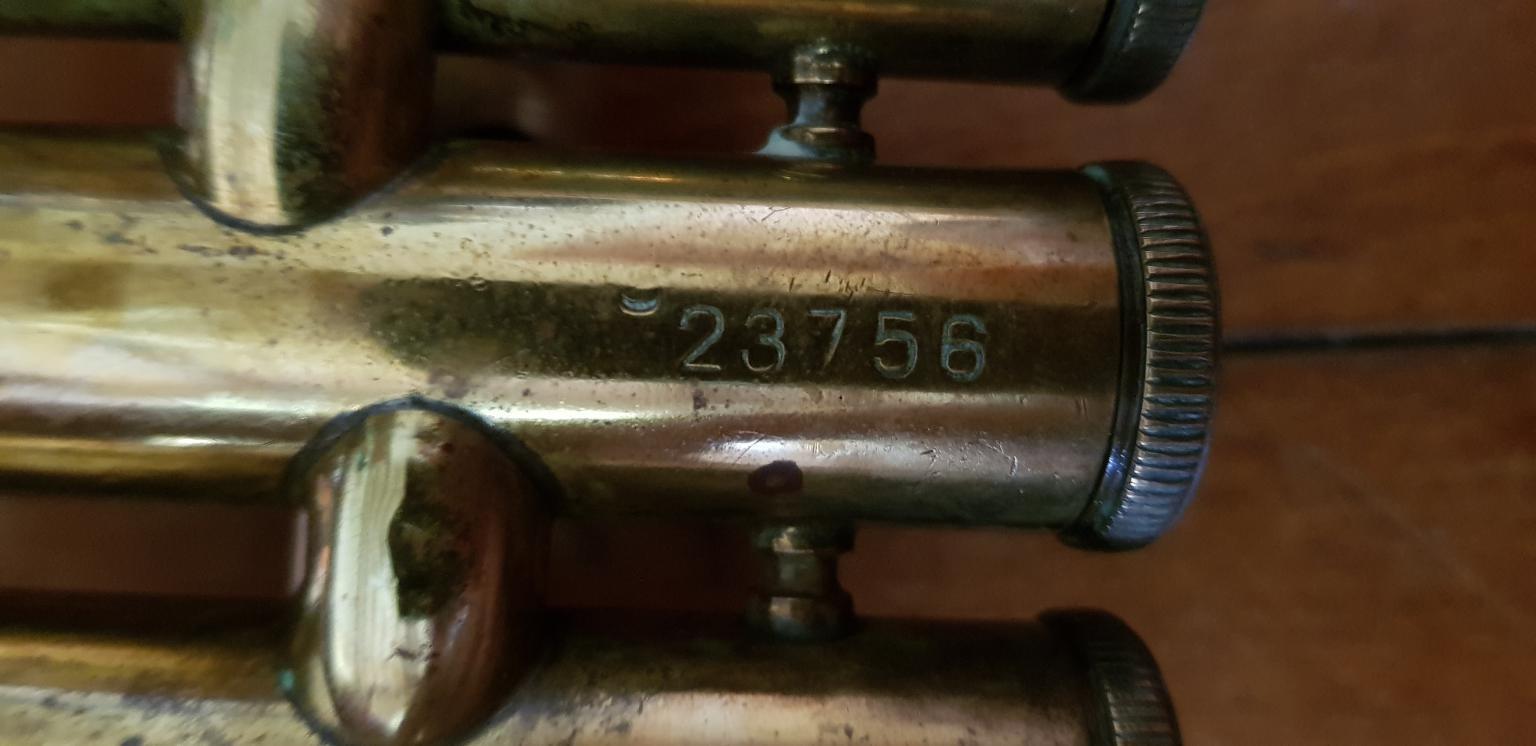

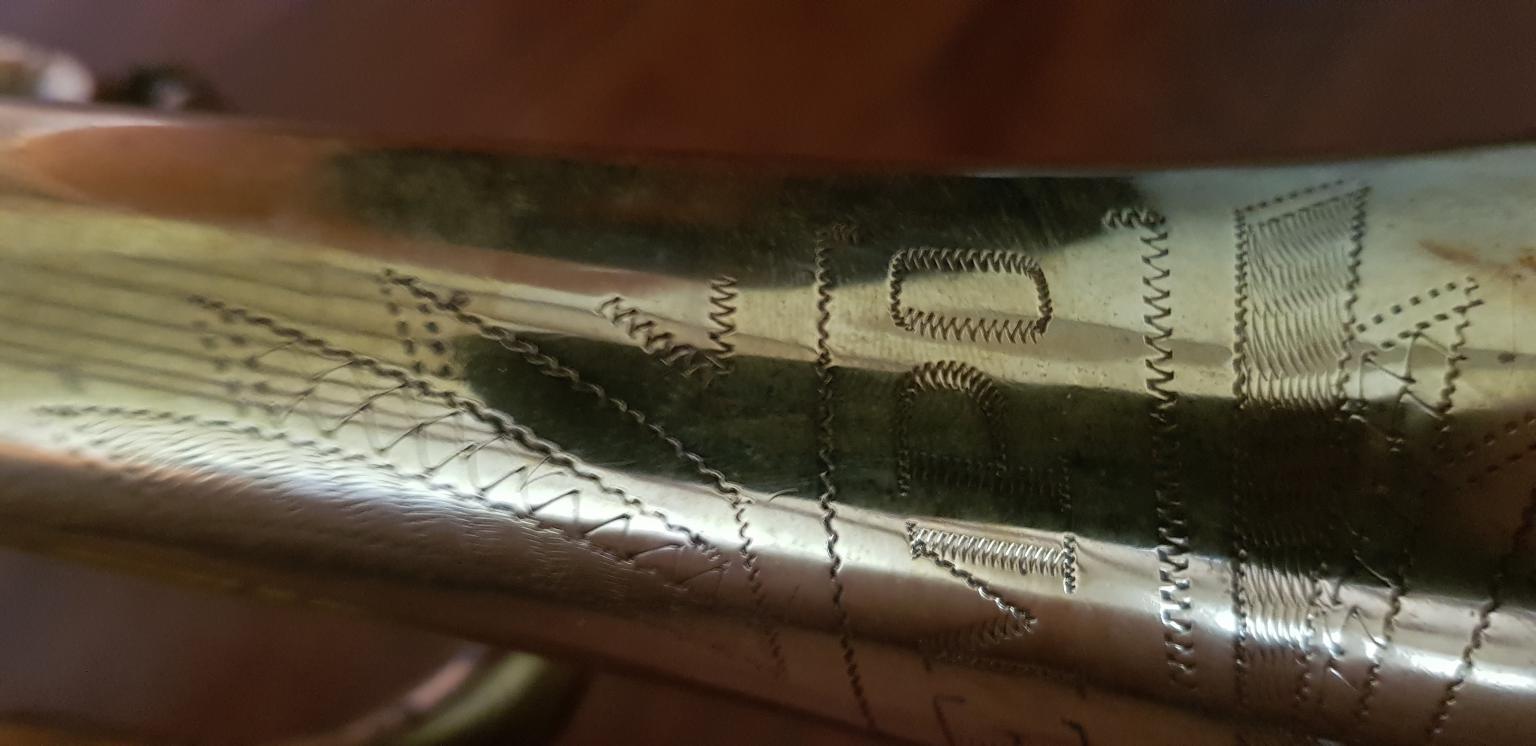



-
@gloucestre Those look great! I had a strange flugel-shank mouthpiece that matches your description and looked like the one there; I thought it might be Amati-Kraslice since the Small Morse flugel-sized receivers on cornets apparently weren't accidental...!
The flat folded-over rim looks like that of the B&F-Amatis that appear for a while; the rolled tube edges, pinky hook, and the serial look like "older" Amatis I've seen. The stamp above the serial might be some production code but I can't make it out. Unfortunately it's hard to pinpoint an exact year, but it'd wager it's late 1950s.
-
@conndirectorfan For the sake of a starting place, I estimate [assume] they started their main sequence around 1950. Some of the features here appear on that Toneking based on the same design, likely one of the last with that name [due to Keilwerth lawsuit, which Amati lost in 1955].
The 500000s appear with direct references to the 1970s - the York 76 Bicentennial specifically. Let's just establish this hypothetical range for their brasses:0-500000 - 1950-1970, so 250000 instruments per decade, 125000 per 5 years - I don't think they started right in 1950, but the only catalog with pre-war-looking models is that Ligna a.s. catalog...
This seems to line up with some attested purchase dates, though Amati is the kind of thing handled in decades...I wish I knew when they introduced that Microbor looking piston.0-125000 - 1950-1955 [roughly]
125000-250000 - 1955-1960
250000-375000 - 1960-1965
375000-500000 - 1965-1970
500000-625000 - 1970-1975
625000-750000 - 1975-1980
750000-875000 - 1980-1985
875000-1000000 - 1985-1990*
I've never seen instruments in the 900000 series, but I've seen plenty with leading zeros [0xxxxx] of some length, making me wonder if they rolled over and dropped the initial 1 to keep things 6 digits?so
875000-000000 - 1985-1990
000000-125000 - 1990-1995
125000-250000 - 1995-2000
250000-375000 - 2000-2005*
I've not seen new Amatis past the high 200000s yet, and this doesn't reflect production inconsistencies or the Meister series at all...! Woodwinds are a different mess entirely; apparently they continued from Keilwerth serials at first... -
Thank you for that information it is good to have a date range. This one seems to have a small bore and takes a bit of getting used to. It likes higher notes and I think sounds best with a Harmon